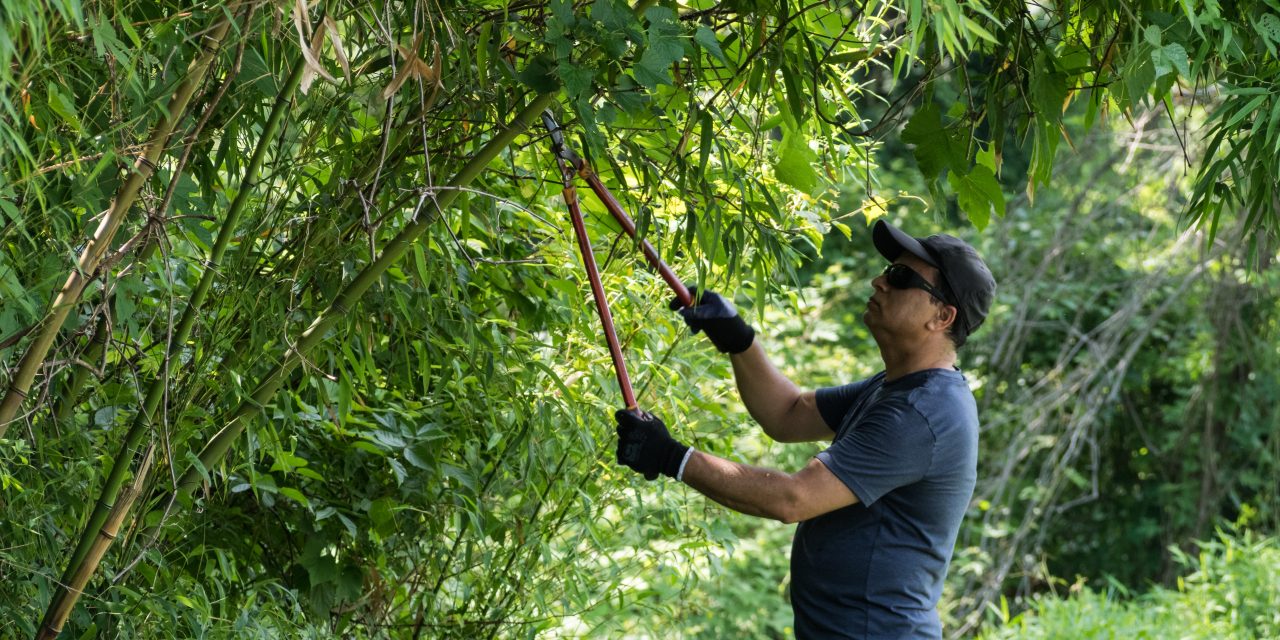By DOROTHY HOOD
ANNAPOLIS, Md. — Running bamboo grows so fast and is so invasive that it’s rooting up headstones in cemeteries, crossing neighborhood property lines and becoming a “major issue” in Maryland parks.
Bamboo overgrowth was so bad for one Maryland resident that the constituent contacted Del. Linda Foley, D-Montgomery, for help with a neighbor’s bamboo crossing the property boundary. Now Foley, a member of the Environment and Transportation Committee, has introduced a bill to regulate the invasive species.
“They came to me because they had a problem and they wanted me to resolve it as their representative,” Foley told Capital News Service. “They had a real problem with bamboo from their neighbor’s yard invading their yard.”
Foley said she hopes this bill will educate people about the invasive nature of bamboo and encourage gardeners to take appropriate measures before they decide to plant it.
The bill, HB 0090, Control of Running Bamboo, would prohibit property owners from allowing running bamboo to grow on their property without proper upkeep, or allowing it to spread to the adjoining properties or a public right-of-way.
Violations would carry a fine of up to $50 for a first offense. A second offense would be subject to a fine not exceeding $200. Maximum fines could not exceed $3,000 under the bill.
According to Foley, the Department of Agriculture has already put two species of running bamboo – golden bamboo and yellow groove bamboo – on the tier-two invasive plant species list. This listing means that the plants cannot be offered for sale unless they are conspicuously marked as tier-two invasive species.
According to the website for Lewis Bamboo, a nursery located in Alabama dedicated solely to the production of bamboo, running bamboo is going to “take over the world” because of its aggressive rooting.
Ryan Colliton, Montgomery County Parks principal natural resources specialist, said the parks focus on native biodiversity and high-quality habitats, trying to maintain or restore them. Running bamboo in the parks, he said, is a major obstruction in that mission.
“It comes into the parks, or it is established in the parks and spread to neighboring yards,” Colliton said.
Regulating these invasive plants, Colliton said, is a three-year investment, with cost depending on the size of the bamboo patch. One of the projects they are doing now is in Willard Avenue Neighborhood Park in Bethesda, Colliton said. It is estimated that the cost of managing the growth is around $8,000, split between the initial treatment of cutting the growth, and any additional treatment within the investment time frame.
“Typically, the easiest way, unfortunately for us to control it, is the use of herbicides,” Colliton said.
Park personnel first try to control the bamboo by cutting it, which exhausts the roots, cutting the taps and allowing regrowth, which weakens the root system. The herbicides come into play when small growths spurt out of the ground, keeping it controlled at the start.
Many Maryland properties use bamboo as boundary barriers. For example, Foley said that Moses Morningstar Cemetery, a historic cemetery along the Beltway in Montgomery County, planted bamboo to shield the graves from traffic.
“The bamboo is so invasive that it’s getting into the headstones and into the burial plots themselves,” Foley said.
Controlling bamboo is the goal, since the spread is so rapid it seems to be a constant issue for landowners, said Daniel Root, a natural resource planner who manages the forest health program and the Forestry Legacy program for the Maryland Forest Service, a part of the Maryland Department of Natural Resources.
“We have done treatments of controlling bamboo in Sandy Point,” Root said.
Sandy Point State Park is located in Anne Arundel County and sits on 736-acres along the northwestern shore of the Chesapeake Bay.
“Bamboo grows through rhizomes underneath (the soil) and spreads … so they have to dig trenches depending on what the landowner’s objective is,” Root said about local contractors that the DNR works with to contain the species.
Bamboo structures are tall and dense, and usually blanket the area in which they inhabit, which could cause the loss of habitat for some wildlife. Parks in Maryland see some issues with wildlife when they cut down the plants.
“There may occasionally be birds that will use it as nesting. One of the unfortunate critters that like to use bamboo is the non-native rats,” Colliton said.
Colliton said with bamboo, and all invasive species, it displaces the natives. If the parks replace bamboo with native plants, it is going to be better for nesting birds, insects, and other wildlife.
This bill is scheduled for a hearing on Tuesday in the Environment and Transportation Committee.




Recent Comments